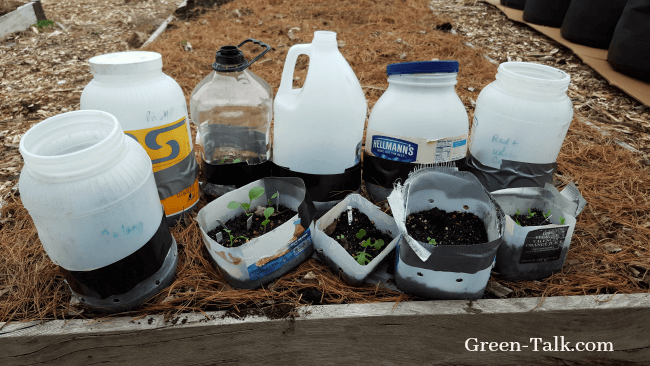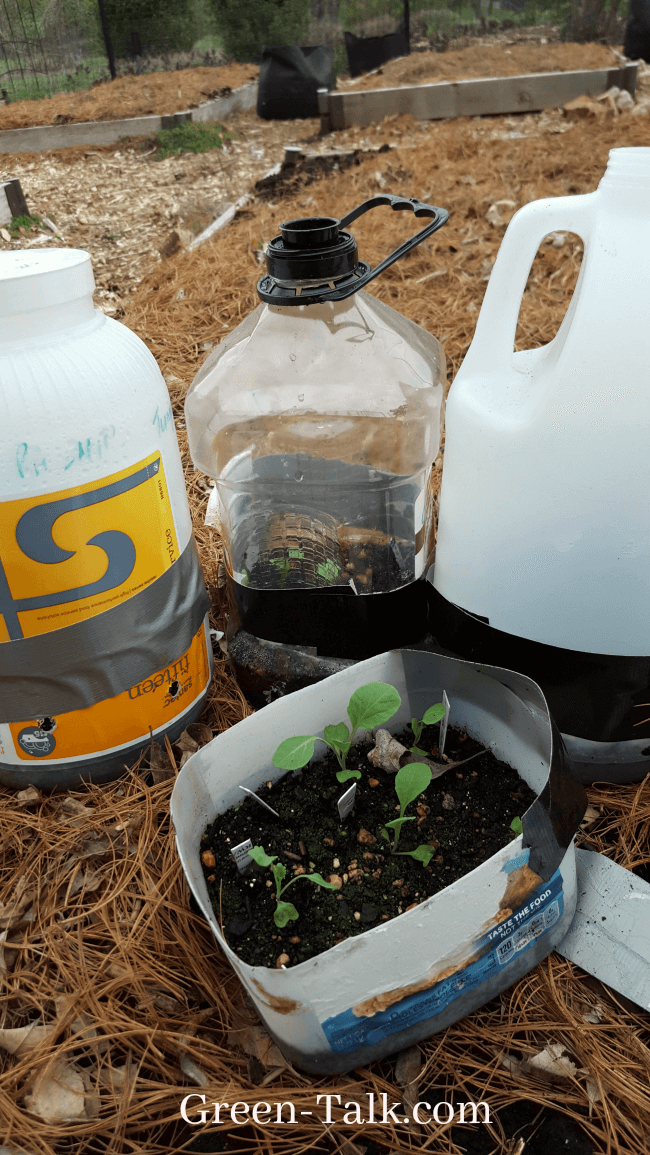Winter Seed Sowing Vegetables Pro and Cons
4 min read
What happens if you want to grow your seeds indoors but just don’t have the space? Consider winter seed sowing. I am a huge advocate of growing seeds indoors but realized that not everyone has the room or the budget to buy grow lights. So, this year I took a crack at winter seed sowing, which is basically growing seeds in opaque jugs outside in the cold.
It was an extreme leap of faith in Mother Nature that these seeds would germinate in the bitter cold. I pretty much chalked off my experiment as a failure since the seeds didn’t germinate until the first week in May.
So Let’s Back Up. What is Winter Sowing?

You can sow the bottles anytime. Some people start in January. Others start later. I started in the beginning of March. If you are sowing perennials, you want to make sure there are a couple weeks of below freezing weather. Many perennials need cold treatment to germinate. (Read HERE about why certain seeds need cold treatment to germinate.)
If you want to sow tomatoes, pepper and other warm plants, I wouldn’t sow them until a month or two before your frost date.
In order to winter seed sow, you will need the following:
Opaque containers like vinegar, juice or water bottles. You are looking for containers with narrow tops. I used some large containers with flat tops and drilled holes in their tops. In essence, you are creating a mini greenhouse.
Instructions on Preparing the Jugs for Winter Sown Seeds:
- Cut the bottles about 4 inches from the bottom and leave part of the bottle attached.
- Drill a few drainage holes in the bottom.
- Drill weep holes about inch from the bottom on all sides so the excess snow and water can seep out.
- Then you add about 3 to 4 inches of moist potting soil to bottom
- Space your seeds as if you were planting them in the garden. You can over-seed, but you will have to separate the plants. I only recommend over-seeding if you have older seeds since your germination rate will be low anyways.
- Use first year seed if you can so your germ rate will be higher—especially with onion and spinach seeds.
- Use duct tape to close up the bottles and remove the tops. You may need to re-duct tape some of the bottles during the winter.
- Open up the jugs on 70+ degree days so they don’t cook inside their greenhouses. Tape them back up when it starts getting cold.
- Water the seeds from below. (Read on since I explain why you need to water your jugs.)
What You Need to Watch Out For:
Given that our winter was really cold, none of my seeds germinated until the first week of May. The seeds need a few days of 70 degree weather to germinate. If they did germinate during the winter, I would put a blanket on them to protect them from freezing weather.
Additionally, you need to watch to make sure the soil doesn’t dry out. If your area has a wet winter or much snow, the soil won’t dry out. My jugs did since there were just periods of very cold temperatures. I used a boot tray and filled it up with water. Then I put the bottles in the tray. The soil soaked up the water from the bottom up.
You can’t really water the plants from the top. You will dislodge the seeds.
My Thoughts about Winter Seed Sowing:

You have to be very patient. If you aren’t patient this method isn’t for you.
Secondly, you have to be able to deal with failure. If your seeds don’t germinate, then you need to buy plants. Given the late date of my plant’s germination, there isn’t time to re-seed if there is seed failure.
When I grow seeds indoors, I wait the usual germination time. If the seeds don’t germinate, I seed again. You can’t to do this with winter seed sowing.
You do have to baby the plants a little bit because of our crazy winters. The plants may germinate and then you have a cold snap. As I mentioned above, You may have to cover them with a blanket until the temperature is above freezing.
Most importantly, my seeds didn’t germinate until the beginning of May. I would have planted some of my indoor grown plants before my winter sown seeds germinated.
Additionally, the seedlings in the winter sown jugs weren’t very big as compared to the ones I would have grown inside. Surprisingly, the winter sown seedlings looked stronger than my indoor seedlings .
Some of my perennials didn’t germinate at all. The seeds may have been too old. Interestingly, one of the perennials, catnip, is an easy germinator inside but few seeds germinated in the jugs. So, I am a little perplexed as to why this happened.
Will I Try it Again?
Probably but with all first year seeds. Radish and lettuce were the first ones to emerge. Onions were really slow to germinate along with broccoli and my perennials. (Remember, these are some of my favorite seed companies.)
Join the Conversation:
Do you winter sow your seeds and if so, what was your experience?
Similar Posts:






